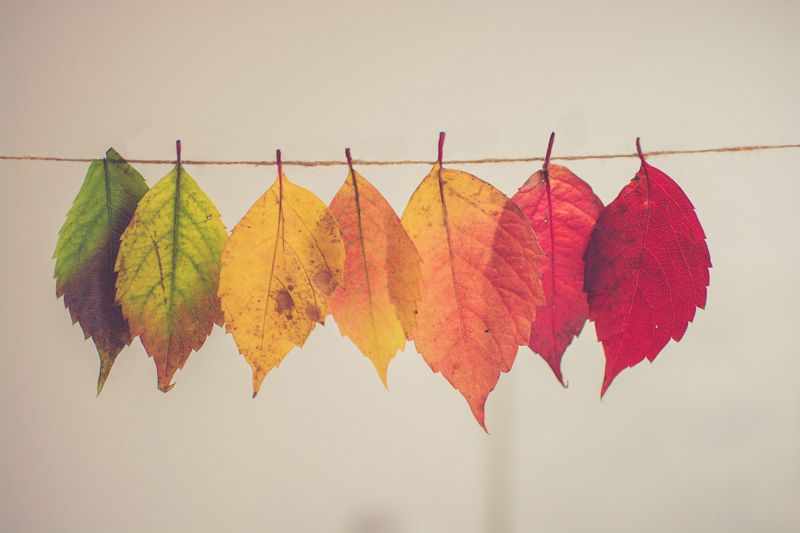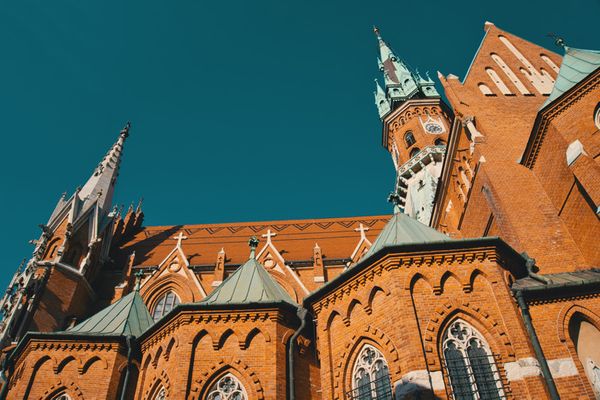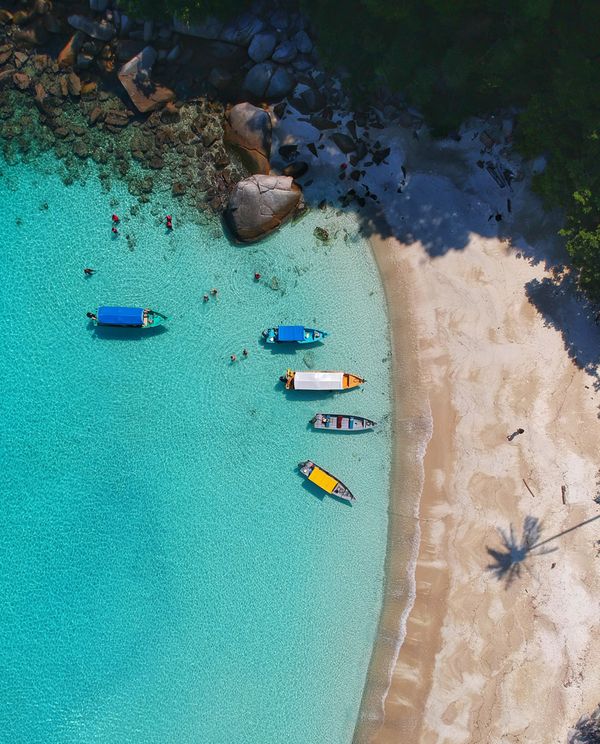Low Season Travel Guide | Dates for Low Season In Asia, Europe, & More
Traveling during low season is cheaper and less crowded for the most part. Here's a guide or navigating the low season for the most popular travel destinations.

Low season travel is becoming one of the key ways for backpackers to travel long term on a budget. So in this guide we're breaking down what low season is, what it means, how to navigate low season in certain countries, and everything else you need to know about low season travel.
What Is Low Season?
Low season is typically when the weather conditions for a country/destination are less favorable to the majority of tourists that want to visit. Think too cold, too hot, too rainy, or less than ideal conditions for the core activity of the trip - this is when you'll find the least amount of tourists in a particular place.
Why Should I Travel During Low Season?
Fewer tourists and travelers mean that the supply for flights, accommodation, tours and more are really high, but demand is really low - so prices are lower to encourage people to come. A hostel or airline is losing money if they don't fill beds or seats, this is where you come in with your shoestring budget and a smile on your face 😊
Low season doesn't have all the perks of high season but a lot of the time, especially for the budget traveler, the perks outweigh the downsides.
When Is Low Season?
Low season depends on the country and isn't nessarily a summer vs winter thing. In some places summer is low season as it's too hot. In other places it's in between calendar seasons as that's when a particular mountain is able to be climbed. So you need to check the destination to find when it's low season and when it's high season - your goals for the travel may vary depending on what your trip entails.
In the next section we're going to go over some of the most popular destinations for travel, and talk about the high season, and low season months. We're going to cover:
- What the weather will be like.
- How crowded it will be.
- When some of the holidays or festivals will take place.
- Other details that you should know.
This isn't a definitive list, but it'll cover the basics and what to watch out for. Remember that:
Low Season = lower prices
High Season = higher prices
That being said, sometimes you want to go during the high season for multiple reasons. Maybe there's a festival you want to go to, maybe there's a mountain you want to climb - in any case, here's the list.
Note: This list is being updated regularly, we don't have every country on there, and there are definitely a few gaps but you should be able to get an idea with what we've got.
Popular Destinations & Contents
- Australia & New Zealand
- Asia
2.1. Hong Kong
2.2. Japan
2.3. South Korea
2.4. Taiwan - Europe
- South America
4.1. Brazil, Chile & Argentina
4.2. Peru & Ecuador - Southeast Asia
5.1. Cambodia
5.2. Thailand, Malaysia & Singapore
5.3. Vietnam
Australia & New Zealand
You're most likely living in the Northern Hemisphere so it's flipped seasons if you're going down to Australia or New Zealand - prepare for some crazy heat too in the summer months.
Australia is big so there's going to be some differences in climates, and tourism depending on where you go, but we'll cover it here so don't worry.
🌞 High | Hot Season (December through February) - It's not surprising that summer is the High Season in a country where most of the towns and cities are coastal.
For the east coast of Australia, the more north you go, the hotter it gets. So the state of Queensland is where you'll get the most sunshine and heat. But don't worry, there are plenty of beach towns everywhere you go. In fact, the season will start early here from October to March, you'll get travelers swimming, snorkeling, and hiking with some partying in the mix as well.
In places like Melbourne, Victoria - you'll get 4 seasons in a day in any given season. It could be sweltering hot one day and freezing the next. Quite sporadic but high season is high season - you'll see a lot of tourists, especially around Christmas and New Years.
😎 High | Warm Season (September through November) - The spring is also quite popular in Australia as you'll get tourists who can't stand how hot it gets in the summer. Especially on the east and west coasts. Gold Coast and above, and Perth and above - these are perfect temperatures for travelers. The crowds get started in the spring.
❄️ Low Season (March through August) - The water is usually less appealing, the weather is cool and can get quite cold depending on how south you are, and the travelers are limited to those who are having a year off working in Australia or New Zealand.
But you'll find some fantastic Skiing in June and July, in New Zealand. You'll always have days where the beach looks great and the temperature is OK for a dip. Prices for flights to Australia and New Zealand are cheaper during these months as well.
Asia
Mostly consistent 4 season weather, though the coastal areas tend to get more sub-tropical climates and this affects high and low seasons throughout some of the regions.
Hong Kong
- 🎆 High Season (October through February) - Starting with hot weather and cooling down throughout these months is the only time Hong Kong is cool. Add holidays to the mix and this period becomes very busy and expensive.
- 🌧️ Low Season (May through September) - Rain, Storms, Typhoons, Heat and Humidity - These months really show you Hong Kong's sub-tropical weather. It's mild most of the time and usually isn't a concern, other than the humidity and rain.
Japan
- 🌸 High | Cherry Blossom Season (March through May) - Spring is the perfect warmer weather in Japan, with April being peak season as the Cherry Blossoms are in bloom throughout the country. This is when everything is extra expensive.
- 🗻 High | Climbing and Summer Season (June through September) - The weather's much warmer now. Mt. Fuji opens for climbing in July and is open through to mid September - prices are stable but it can get quite touristy.
- 🍁 Low | Autumn (Late October through December) - This avoids the spring and summer, along with cherry blossoms and climbing seasons. It also avoids the New Years holidays and ski season that'll peak in winter. It's the perfect cool temperature and flights/accommodation are lower. The later in Autumn you go the better, as Autumn foliage can attract a lot of tourists too.
South Korea
- 😎 High Season (June through August) - Summer time with high levels of tourist activity - it's also hot.
- ✌ Low Season (April through May, September through October) - Late Spring and Early Autumn are the perfect times where tourists tend to be in smaller numbers, flights and accommodation are cheaper.
Taiwan
- 😎 High Season (July through August) - Summer time with price increases for accommodation and other expenses - more crowds.
- ✌ Low Season (November through March) - Varies from warmer ~25 C (South) to colder (North) ~10 C averaging out country wide around 18-19 C. Fewer tourists, but around New Years time, prices may go up for a few weeks.
- ☯️ Shoulder Seasons (Everything in between) - Still some good discounts available on accommodation, though watch out around March-May as it may resemble high season because of Chinese tour groups and tourists.
Europe
Europe has many countries that are land locked, coastal, cross over multiple climates, and are miles apart both latitudinal and longitudinal. We'll split Europe up into certain areas for specifics but the high and low seasons are pretty consistent across each region. Here're some guides on Europe.

For Europe, these are the general seasons.
😎 High Season (Late June to Mid September) - Summer is the high season in most of Europe. Tour groups, enormous music festivals, sailing, swimming, hiking, holidays - it's all there.
But certain areas take longer to warm up than others, and some get warmer more quickly. So depending on where you are, you can move the months around a little but the middle will always be busy, and expensive.
- In Southern European countries like Italy, Spain, Portugal, Croatia etc. It starts getting warm in late spring around May. As the weather gets warmer the tourists start coming in.
- In the Baltic's and Scandinavia, Summer is still high season with July being the busiest. It's considered the hottest time with an average of 20 degrees Celsius which is hilarious for anyone living in hotter climates. Going here in may, like Southern Europe would definitely be considered low season.
Other countries in Central and Eastern Europe are consistent with the usual Summer High Season traffic, and prices.
❄️ Low Season (November through March) - Winter is the low season in Europe with the exception of hot spots for Skiing and winter sports - think parts of Switzerland and France, and other Central European countries, January to March. And the holiday season in late December.
Besides those specific activities, you won't see a lot of tourists during the winter. Accommodation, transport, and attractions are cheaper, but you'll need to layer up to deal with the cold.
☯️ Shoulder Seasons (April to Mid June, September through October) - Cool weather, but it can be considered cold depending on where you are and the day, the prices aren't at a peak and you'll be picking up cheap accommodation and transport everywhere you go.
These in-between seasons are some of the best times to be traveling Europe on a budget as you get best of both worlds. It's not extreme winter weather, but it's not peak tourist season either.
- Southern Europe is where you'll get some nicer weather during the shoulder seasons. So going early to Italy, Spain etc. might be a winning strategy.
South America
The high and low seasons in South America greatly depend on where in South America you're traveling. The closer you are to the equator the hotter it'll be, but that being said, the summer will be the hottest and wettest season in South America.
Brazil, Chile & Argentina
- 😎 High Season (November to Mid March) - The Summer months attract the most visitors, and it'll be the hottest it'll usually get. There will be plenty o travelers looking to go hiking, exploring the national parks, and going to world renowned celebrations in Brazil. Brazil and Argentina will usually be hot and humid, excluding Patagonia which will be dry.
- ☯️ Shoulder Seasons (Mid March to Early June, September through October) - This corresponds to the spring and autumn months, and is usually cooler, less touristy and you'll get a cheaper experience. It's the best time to go as a budget traveler.
- 🌧️ Low | Wet Season (June through August) - These are the winter months in Chile, ski resorts will be open, the salt flats will also be bearable as the heat will have dissipated. There will be less tourists and cheaper prices, barring the skiing hot spots. Depending on the region you're in, if it's not for skiing i.e. no snow, you'll get some rain, but it's more the day time temperatures going down to 13 C that pushes away the masses.
Note that Brazil may see spikes in accommodation prices as the weather is less humid and tourists do come during this season.
Peru & Ecuador
- 😎 High | Dry Season (May through September) - The peak season in Peru and Ecuador corresponds to the Dry Season, or their summer. You'll get hot temperatures but less rain than other parts of the continent. These months also correspond to the holidays of tourists from places like the US or Europe so it can definitely get crowded.
- 🌧️ Low | Wet Season (October through April) - Barring Christmas and New years times, accommodation and flights are much cheaper. But expect rain and humidity during these months, the mosquito's will be out as well, so make sure you spray up.
Southeast Asia
Southeast Asia has a combination of heavy rainfall and monsoon seasons, coupled with hot seasons where the heat can get quite high. But regardless of the season, it's consistently warm We've written quite a few articles on Southeast Asia.

Cambodia
- 😎 High | Dry Season (November through March) - The hottest it'll get is in April and it'll work its way there from a cool 20 C from November to January, picking up the pace until it's really hot around March/April - peak tourism is around this time.
- 🌧️ Low | Wet Season (May through September) - Day time temperatures are around 25-27 C and it rains almost everyday but there are no monsoons or typhoons as the western border isn't coastal. But it's not constant, it rains during the day for a few hours much like other SE Asian countries, and then it tapers off. Well worth it for the cheaper travel.
Thailand, Malaysia & Singapore
- 😎 High | Cool Season (October to March) - This is the most popular time as it's cooler than usual but not so hot.
- 🔥 Low | Hot Season (March to June) - This is when it starts getting quite humid, but it's still a great option if you're going on an island/beach style trip.
- 🌊 Low | Monsoon Season (June to October) - This is when it rains for 1-3 hours in buckets every day, but then goes back to normal clear/cloudy skies. Avoid the middle of it, and spend more time in central and northern Thailand, or away from the coast in Malaysia - and you should avoid it.
Vietnam
- 😎 High | Cool Season (March to May, September to November) - These periods are spring and autumn, they're cooler and have holidays scattered through them (April/May) so it's busy on both the local and tourist front.
- 🎆 Low | Local Summer Holidays (July to August) - This is low season in terms of tourists because it's quite hot, but it can get crowded with locals as it's their summer holidays -that being said, this could be a great thing in terms of local prices and a cultural experience.
- ⛄ Low | Winter (December to February) - Don't fret, Vietnam winter won't be a snowy one and depending on where you're from, you probably won't feel cold. North Vietnam is 10-15 Celsius and central to south is around 20-30. Perfect temperatures but fewer tourists.
This article will be updated with more countries and regions regularly.

